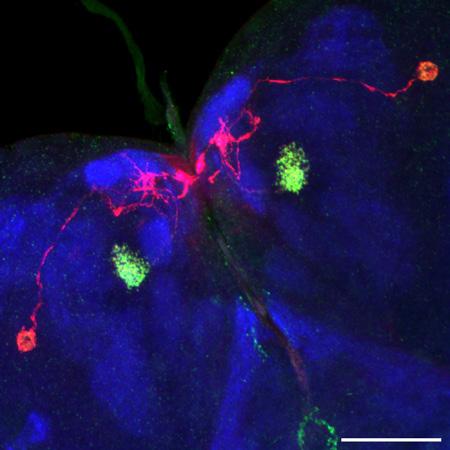

- About the Neuroscience Program
- Faculty
- Graduate Ph.D. and M.S. Tracks
- Undergraduate Specialization & Research Opportunities
- Useful Links
Neuroscience Research
The human brain is the most fascinating and complex machine in the known universe and understanding how it works is one of science's greatest challenges. Francis Crick, Nobel prize winning molecular biologist, has stated that "Consciousness is the major unsolved problem in Biology."
Furthermore, it has been estimated that over half of the American population will have their quality of life seriously compromised by a neurological disorder as they age, making understanding the brain a major medical priority as well.
The Neuroscience Program at Ohio University supports a wide range of research activities employing state-of-the-art techniques in molecular biology, biophysics, electrophysiology, microscopy and image analysis, and computational modeling. Individual faculty research programs are funded by the National Institutes of Health, the National Science Foundation, and other agencies. Topics include:
Computational Neuroscience
- Neural coding of sensory stimuli— Mitchell Day
- Neural networks— Scott Hooper
Cell and Molecular Neuroscience
- Parkinson's disease, Alzheimer's disease— Daewoo Lee
- Nervous system development and genetics— Janet Duerr & Corinne Nielsen
- Neural plasticity— Yang Li
- Neurotransmitters and ion channels— Janet Duerr
Neuroethology
- Sound localization— Mitchell Day
- Rhythmic behaviors— Scott Hooper
- Biomechanics— Scott Hooper
- Electroreception— Alexander Neiman
About the Neuroscience Program
The Graduate Neuroscience Program in the Biological Sciences Department at Ohio University is designed to provide students at all levels with the knowledge, experience and skills needed to pursue careers in this most exciting field. It is also a very interdisciplinary program, involving faculty from Biological Sciences, Biomedical Sciences, Physics & Astronomy, and Mathematics, and thus offers unique opportunities for students with diverse backgrounds to explore a wide range of career opportunities.
For undergraduates, the program includes an emphasis in the Biological Sciences B.S. degree and the Honors Tutorial College B.S. degree in Neuroscience. The HTC is a completely unique and exciting approach to undergraduate education that provides students with the resources and flexibility to pursue their individual interests.
The Neuroscience Program was established in the late 1980s and quickly acquired the faculty and facilities needed to offer excellent educational and research experiences to students interested in subjects ranging from behavior to the molecular machinery underlying brain function. Both undergraduate and graduate degrees with a neuroscience focus are available at Ohio University.
Facilities
Several research facilities are available to graduate and undergraduate researchers through the participating departments. Each faculty member has 500 to 2,000 square feet of laboratory space in which they conduct active independent research programs. Modern well-equipped support laboratories complete with technical support personnel are available for shared activities and equipment. This support includes modern light microscopy and histology facilities scanning and transmission electron microscopes with digital imaging capabilities super-computer facilities molecular biology facilities and a hybridoma facility.
In addition to this departmental support, the Neuroscience Program, through funding from the National Science Foundation and Ohio University, maintains a 3-D imaging and image analysis facility for shared use. This facility includes a Zeiss LSM 510 laser scanning confocal microscope system a NeuroLucida 3D reconstruction and analysis system and a large format printer. A part-time imaging technician is employed to assist users and maintain these facilities.
Useful Links
- The Allen Brain Atlas
- American Association for the Advancement of Science (AAAS)
- American Physical Society (APS)
- American Physiological Society
- American Psychological Society
- Association for Research in Otolaryngology (ARO)
- Biophysical Society
- Comparative Mammalian Brain Collections
- Federation of American Societies for Experimental Biology (FASEB)
- International Neural Network Society (INNS)
- MRI Atlas of Human Brain
- National Institutes of Health (NIH)
- National Science Foundation (NSF)
- Organization for Computational Neuroscience (CNS)
- Society for Mathematical Biology (SMB)
- Society for Neuroscience
- UK Institute of Physics (IOP)
